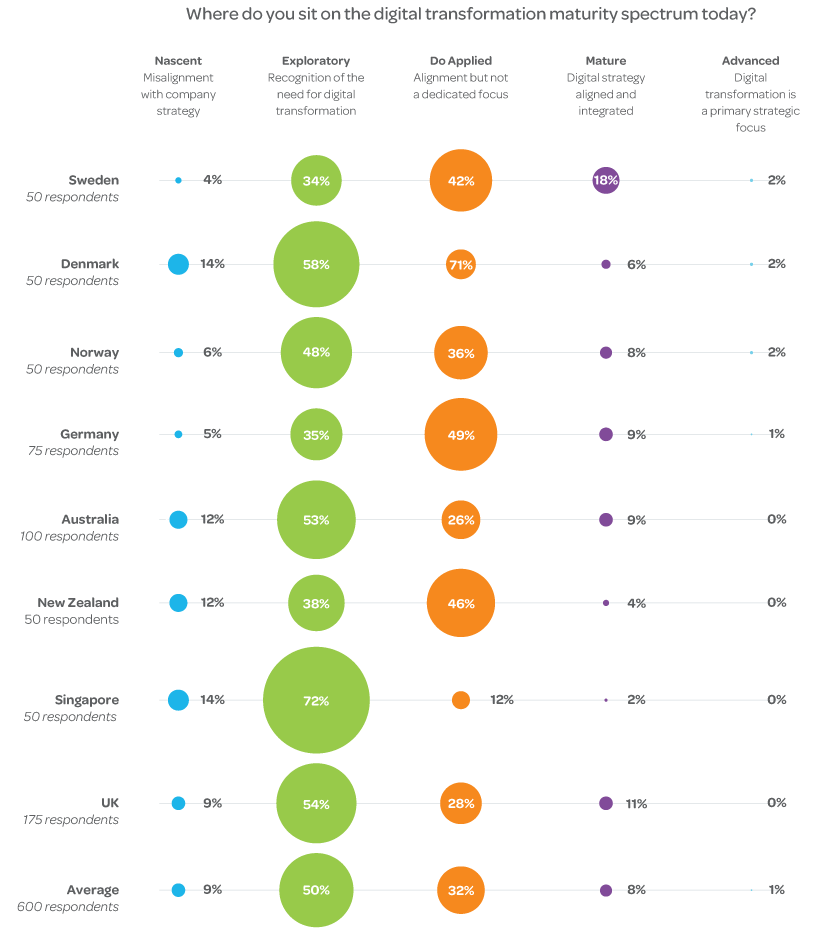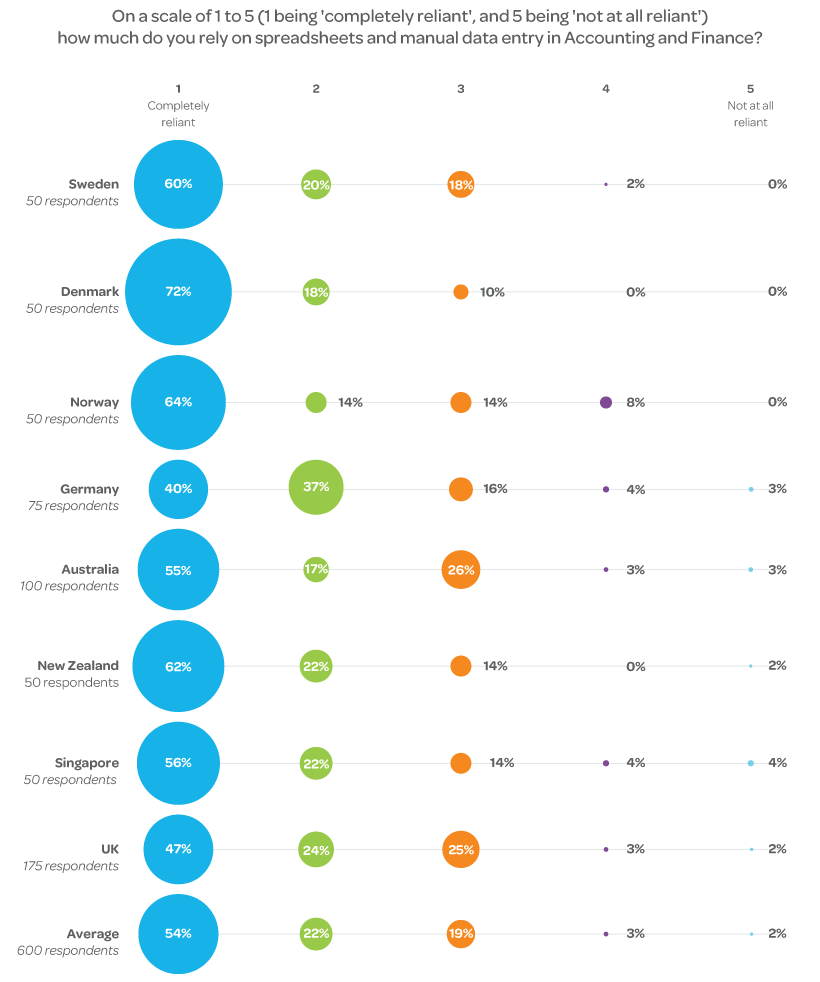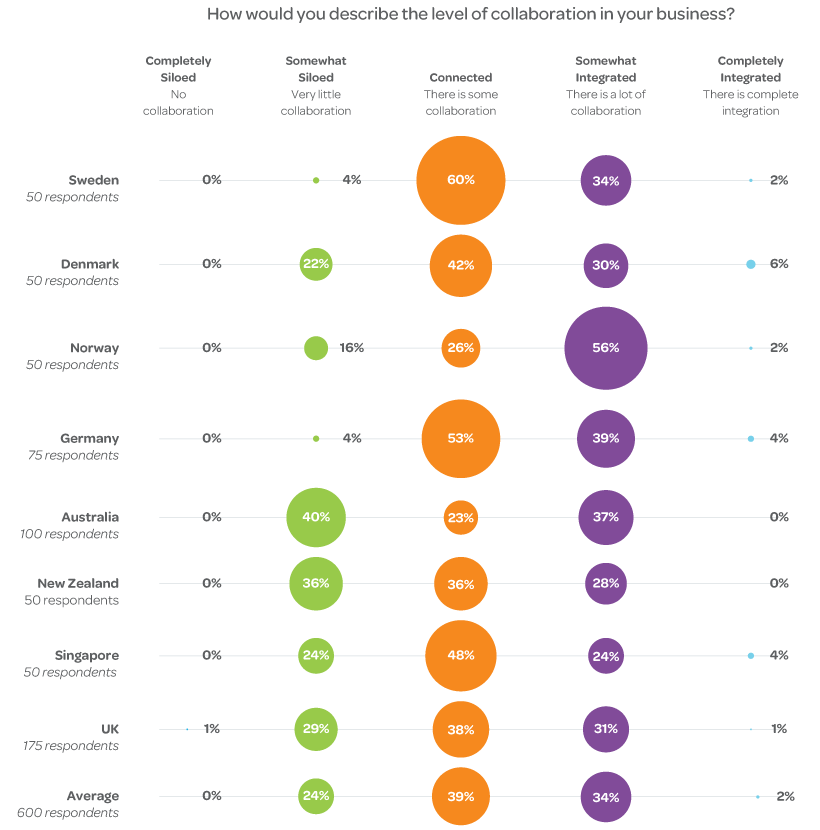A&E firms are at a different stage of digital maturity. Where do you fit in - and how can you get ahead?

For over 40 years, the Deltek Clarity Architecture & Engineering Industry Study has assessed the architecture and engineering (A&E) industry in North America, and helped firms better understand benchmarks, market conditions and upcoming trends that could impact their operations. Now, we've extended the report into APAC and EMEA.
We asked firms in these diverse regions where they think they sit on a digital maturity spectrum. Unsurprisingly, there were some big disparities both in their answers, and the reasons for them.
In this blog, we'll take a closer look at the state of digital maturity in the global A&E industry, as well as some of the barriers to success. Then, we'll make five recommendations for A&E organisations looking to make the leap to more advanced stages of digital maturity.
The countries that think they're very digitally mature and the ones that don't
While neither region is miles ahead of the other, more EMEA firms see themselves as further along the maturity spectrum. In nearly every country we surveyed in the region, a small percentage of firms consider themselves to be advanced: a stage where digital transformation is a primary focus at the executive level. Not a single APAC firm, however, thinks its digital maturity is beyond the mature stage: where business and IT units are integrated and continuously delivering digitally-enabled services.
Despite a small margin between the regions, some countries report themselves as ahead of the others. Only 4% of Swedish firms think they sit at the lowest end of the spectrum, while 14% of firms in Singapore place themselves here. And it's not the only time Sweden and Singapore sit at opposite ends. Almost a fifth (18%) of Swedish firms believe they are mature, while only 2% of firms in Singapore say the same.
Instead, most Singapore firms (72%) believe they are at an earlier exploratory stage of digital maturity where there's some digitalisation, but only on an ad-hoc basis. But they're not alone. Aside from New Zealand, Germany and Sweden, almost all countries see a majority of firms report they're at this stage of digital maturity.
Table 1- Where do you sit on the digital transformation maturity spectrum today?
Take a peek behind the curtain
Manual processes can be a signifier of how digitally mature a firm is. Many A&E firms across EMEA and APAC report relying on them heavily. More than half (54%) of firms across both regions say they’re completely reliant on manual processes in accounting and finance departments.
Table 2 - On a scale of 1 to 5 (1 being 'completely reliant', and 5 being 'not at all reliant') how much do you rely on spreadsheets and manual data entry in Accounting and Finance?
One way to efficiently automate or reduce manual processes is through Artificial Intelligence (AI) whether to streamline project management, produce actionable data insights or improve BIM processes. More than a third (39%) of A&E firms, however, don't consider AI to be crucial. In fact, 14% still consider it somewhat unimportant. Interestingly, only 38% of firms in Singapore (the country with the lowest reported levels of digital maturity) said AI was very or somewhat important, while 82% of Swedish firms (reporting the highest levels of digital maturity) say the same
Our top five recommended areas for improvement:
Countries where firms report being digitally mature tend to have a few things in common. From these commonalities, we can see some shared strategies that can help create a more digitally mature organisation.
#1 Reduce your reliance on spreadsheets
Spreadsheets will always play a vital role in some parts of project management. But over-relying on them can lead to unnecessary, error-prone manual processes, especially in other areas of the business. By replacing spreadsheets with digital systems, you can minimise manual data entry, lower the risk of human error, and reduce the administrative burden on your employees.
#2 Embrace Automation
Automation can take on the heavy lifting of manual, repetitive tasks and help move your company to a more paperless environment, especially for financial processes. This can help firms reinvest resources in more strategic initiatives that lead to greater digital maturity.
#3 Build a culture of collaboration
Almost two-thirds (63%) of all A&E firms name ample cross-functional cooperation as one of the top three facilitators of success, but integration remains low. Only 34% of firms think they're somewhat integrated and only 2% say they're integrated completely.
Table 3 - How would you describe the level of collaboration in your business?
From our experience working with A&E firms on digital transformation projects, we#ve seen just how much of a positive impact increased collaboration between departments can have. When business units can share resources and expertise, the whole organisation can transform much more efficiently.
#4 Engage your teams
It's people that ultimately drive successful digital initiatives and processes. Facilitating better interaction between teams, especially top-down, can improve employee engagement with digital initiatives and lead to more successful projects.
The survey results show that most firms are already putting people at the heart of addressing technological challenges, but they're taking different paths to reach this result. Some are identifying and developing technology subject matter experts (60%) to help them on their journey. Others are looking to hire staff, acquire another company with the necessary expertise (58%) or identify a champion to lead their initiative (52%).
#5 Educate your people
There's a clear positive correlation between the technologies each firm says it understands best and the technologies it thinks are important to their business. But only 10% of A&E firms think educating staff is a top initiative.
The better people understand the digital solutions available to them, the more on board they will be and the more firms will be able to make of the digital transformation opportunity.
Sweden is a clear example of this in action today. Unlike any other country, 100% of Swedish firms agree with the statement ;I have a clear understanding of my firm's digital transformation strategy and they also report having a high level of digital maturity.
Across the EMEA and APAC regions, there’s plenty of space for A&E firms to grow and improve their digital maturity. And in an increasingly digital world, there’s also a clear need to.

Deltek Project Nation Newsletter
Subscribe to receive the latest news and best practices across a range of relevant topics and industries.

 Log In
Log In















